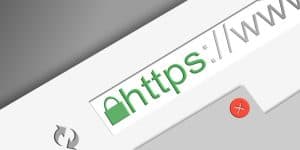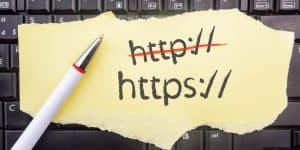Canonical URLs play a crucial role in SEO by informing search engines about the preferred version of a webpage. However, encountering both http:// and https:// in the canonical tag can lead to confusion, negatively impacting your site’s search performance. This article explains why this issue occurs, its SEO implications, and how to fix it effectively.
What Is a Canonical URL?

A canonical URL is a meta tag in the HTML of a webpage that specifies the preferred URL for that content. For example:
Why Are Canonical URLs Important?
Here are some benefits of using canonical URLs effectively:
- Avoids Duplicate Content: Prevents search engines from indexing multiple versions of the same page.
- Improves Link Equity: Consolidates link value to the preferred URL.
- Enhances Crawling Efficiency: Guides search engines to focus on the correct version.
- Better User Experience: Ensures visitors always land on the secure and correct version of the page.
Why Does WordPress Show Both HTTP and HTTPS?

These are some common causes of HTTP and HTTPS in Canonical URLs:
- Mixed Content Issues:
A website improperly configured to use HTTPS may still serve some elements over HTTP, causing inconsistencies. - WordPress Settings Misconfiguration:
The “WordPress Address (URL)” and “Site Address (URL)” in WordPress settings might have mismatched protocols. - Improper SSL Setup:
SSL certificates may not be correctly implemented, resulting in mixed protocol usage. - Theme or Plugin Conflicts:
Some themes or plugins may hardcode HTTP instead of dynamically fetching the protocol. - Third-Party Tools or CDN Issues:
CDNs or external tools may serve assets using a different protocol than the main site.
How to Identify Canonical URL Issues
Here is how you can identify or check the URL:
Tools to Check Canonical Tags:
- Browser Developer Tools: Open your browser’s developer tools (accessible via F12 or right-click > Inspect). Navigate to the
<head>section to locate the<link rel="canonical">tag. - SEO Tools: Use tools like Google Search Console, Screaming Frog, or Ahrefs for in-depth analysis. These tools can crawl your website and identify conflicting canonical tags.
- Online Checkers: Free utilities like “Canonical Tag Checker” allow quick validation of canonical tag setups.
What to Look For:
- Inspect if the canonical tag alternates between
http://andhttps://across different pages. - Look for mixed content warnings in your browser indicating that some elements are being served over HTTP.
- Ensure there are no duplicate canonical tags or improperly structured meta tags in the
<head>section.
How to Fix Canonical URL Issues in WordPress
Follow these steps to fix the issue:
Step 1: Update WordPress Settings
To fix canonical URL issues, start by verifying your WordPress settings. Navigate to Settings > General in your WordPress dashboard and check the “WordPress Address (URL)” and “Site Address (URL)” fields. Ensure both URLs begin with https://. If they display http://, update them to https:// and save changes.
Step 2: Force HTTPS Using .htaccess
If your server supports .htaccess, configure it to redirect all HTTP traffic to HTTPS. Add the following code to your .htaccess file in the root directory:
Clear your browser cache and test your site to confirm the redirection works.
Step 3: Verify SSL Configuration
A valid SSL certificate is essential for HTTPS to function properly. Use tools like SSL Checker to confirm your certificate is installed. If issues are detected, contact your hosting provider to resolve them.
Step 4: Use an SEO Plugin
Install SEO plugins like Yoast SEO or Rank Math to manage canonical tags dynamically. These plugins ensure consistent canonical tags pointing to the correct HTTPS version.
Step 5: Address Theme or Plugin Conflicts
Inspect your theme and plugin files for hardcoded http:// URLs. Replace them with WordPress functions like get_site_url() or home_url() to adapt URLs automatically to the correct protocol.
Step 6: Test Redirections
Use tools like Redirect Checker to verify HTTP-to-HTTPS redirections. Manually test multiple pages to ensure consistency.
Best Practices to Prevent Future Issues
Here are some best practices to prevent future issues with canonical URLs and ensure your WordPress website maintains optimal performance:
- Enable HTTPS Site-Wide: Always serve all content over HTTPS.
- Regular SEO Audits: Periodically check canonical tags using tools like Screaming Frog.
- Reliable Hosting Provider: Use providers with built-in SSL support.
- Update Plugins and Themes: Keep your WordPress environment up-to-date.
- Monitor Search Console Reports: Watch for canonical tag or mixed content warnings.
Conclusion
Having both http:// and https:// in canonical URLs can hinder your site’s SEO performance. By identifying the root cause and applying the fixes outlined here, you can ensure that search engines recognize the correct version of your pages. Regularly auditing your site will maintain optimal performance.
Have questions or tips? Share them in the comments below!